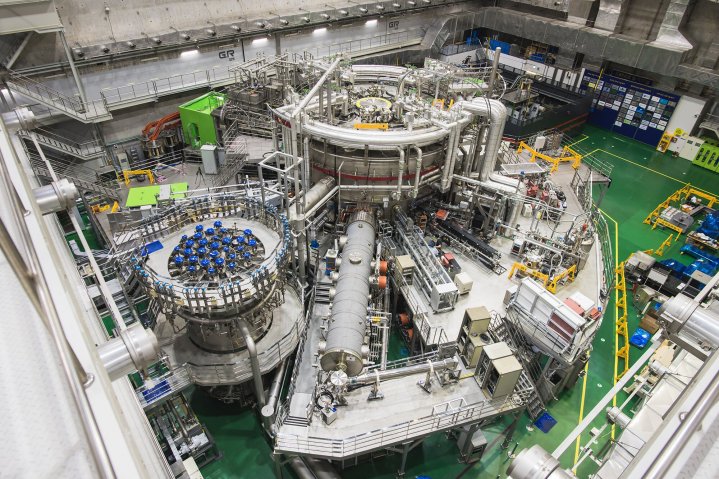
An artificial sun built in Korea has set a new record for the longest operation, maintaining a temperature of over 100 million degrees Celsius for 20 seconds.
The Korea Superconducting Tokamak Advanced Research (KSTAR), technically known as a “superconducting nuclear fusion research device,” is a device that recreates fusion similar to that which occurs in a star like our sun, so that magnetic fusion energy can be studied. The idea is that fusion could be used as a power source and contained safely using magnetic fields.
The new period of 20 seconds of operation at full temperature is a step up from the previous achievement of KSTAR of running for 8 seconds in 2019, following its reaching of temperature for this first time in 2018.
The extremely high temperature of 100 million degrees is needed for hydrogen atoms to gain sufficient energy to overcome the electrical forces of repulsion between protons. This allows the atoms to fuse, which could create electricity in a process called thermonuclear fusion power. Such a source could be a sustainable alternative energy source that could reduce the world’s reliance on fossil fuels.
Director Si-Woo Yoon of the KSTAR Research Center at the KFE explained the achievement in a statement: “The technologies required for long operations of 100 million- plasma are the key to the realization of fusion energy, and the KSTAR’s success in maintaining the high-temperature plasma for 20 seconds will be an important turning point in the race for securing the technologies for the long high-performance plasma operation, a critical component of a commercial nuclear fusion reactor in the future.”
The latest advances were enabled by improving the performance of the Internal Transport Barrier (ITB) mode; a recently developed mode that allows plasma to be maintained for longer periods. “The success of the KSTAR experiment in the long, high-temperature operation by overcoming some drawbacks of the ITB modes brings us a step closer to the development of technologies for realization of nuclear fusion energy,” added Yong-Su Na, professor at the Department of Nuclear Engineering, SNU, who has been jointly conducting the research on the KSTAR plasma operation.



